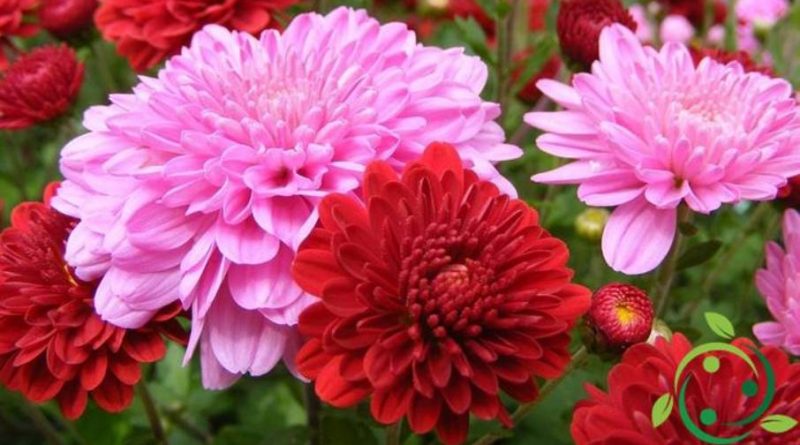How to grow chrysanthemums
How to grow chrysanthemums
Chrysanthemums (Chrysanthemum L., 1753) are a genus of plants from the Asteraceae family, with numerous hybrids and varieties grown as ornamental plants in floriculture and gardening. The chrysanthemum, flower used in Italy for the feast of the dead, includes about 200 species of annuals, perennial, herbaceous and bushy, with the shape of the flower and flowering period from late spring until the arrival of frost. In this fact sheet we will see however the general principles for how to grow chrysanthemums and the most appropriate techniques. It is a kind that adapts to very different soils but with preference for substrates with neutral or slightly acidic pH, preferably dissolved, well drained and rich of well humified organic substance. The water requirement is medium-high under conditions that never create stagnations, whether the cultivation is in the ground or in the pot. Obviously in the vase it is good to prepare, as usual, a lower layer of coarse material (expanded clay, coarse gravel, etc.) to favor the drainage of excess water. In this case the soil must be composed of three identical parts of common ground taken from your garden, sand and soil for flowering plants.
The exposure of the plant must be sunny and if it is grown in the open field it is good to protect the plants with a vegetable mulch, both to decrease the summer evaporation and contain better weeds, and to protect the roots from the winter cold. To fertilize the substratum it is necessary to act with a well humified fertilizer (excellent mature manure in the open field) and the soil for flowers enriched with macro and microelements for the cultivation in pot. In the open field the fertilization should be done in the period of late winter-early spring mixing the fertilizer with the first layers of earth taking care not to disturb the roots; in pots you can use liquid fertilizers to be applied from spring, with a higher frequency in summer. For a good color of the flowers it is good that the fertilizers are well equipped also with potassium.
After flowering (with perfectly dried flowers) the chrysanthemum should be cimato, shortening the stems, orientating the plant to a length of about 20 cm. This allows the plant to bloom well and abundantly the following year. Another technique, often not adopted, is that of pruning that must be performed twice a year, at the end of May and in mid-August. Taking care to eliminate the dry, weaker or damaged shoots, in order to thin out the vegetation that does not help the good vegetation and then bloom the chrysanthemums. Moreover, if the variety of chrysanthemums is perennial, this allows plants to live longer.
For propagation and multiplication of the chrysanthemum, the best technique is the thinning of the plants, uprooting them with great delicacy, taking care to wet the substratum well first to damage the roots less.
Among the adversities of the chrysanthemums, even if it is a very resistant kind, we still remember the mites or the rust. They can be determined by various factors, such as excess and nitrogen moisture in the substrate. Overcoming this should decrease considerably and in any case the use of preventive nettle macerates would give greater strength and resistance to plants.

